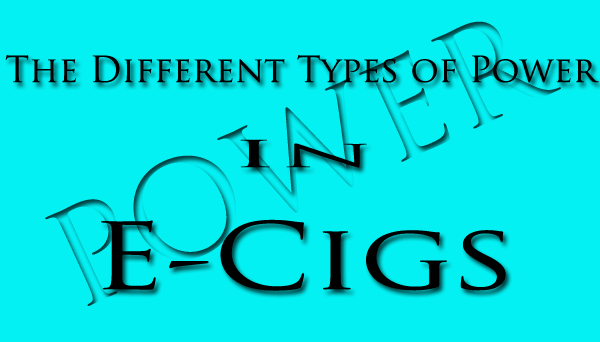
Completely mastering the electronic cigarette is quite the task. The great thing about e-cigs is they’re so simple, yet so advanced. With the electronic cigarette market just starting to really blossom, new technologies are constantly being introduced. It’s what keeps the avid vaper continually thinking they’ve learned it all …and then a new e-cig is created and packed with better features.
An e-cig is very simple in logic. The two main components that make up an electronic cigarette, is the battery and atomizer. The battery is typically housed by a metal tube or box. Some electronic cigarettes are also housed by plastic and even wood materials. The atomizer makes use of a heating element, which vaporizes e-liquid. Though the design of an e-cig is simple, they have another side to them that is much more advanced.
Many electronic cigarettes today that are being manufactured are being equipped with computer chips. These chips provide multiple functions and features for safety, information and different types of power. E-Cig users crave the perfect vape, which is usually a mixture between consistentcy, high voltage or wattage, and the ability to control it. To provide the user with this ‘perfect vape’, e-cig manufactuers are using these types of power.
Pulse Width Modulation
Pulse-width modulation (PWM), or pulse-duration modulation (PDM), is a commonly used technique for controlling power to inertial electrical devices, made practical by modern electronic power switches. The average value of voltage (and current) fed to the load is controlled by turning the switch between supply and load on and off at a fast pace. The longer the switch is on compared to the off periods, the higher the power supplied to the load is.
Read more: http://en.wikipedia.org/wiki/Pulse-width_modulation
[youtube id=”Jd5QG-OHS9A” width=”600″ height=”350″]
Frequency Modulation
In telecommunications and signal processing, frequency modulation (FM) conveys information over a carrier wave by varying its instantaneous frequency. This contrasts with amplitude modulation, in which the amplitude of the carrier is varied while its frequency remains constant. In analog applications, the difference between the instantaneous and the base frequency of the carrier is directly proportional to the instantaneous value of the input-signal amplitude. Digital data can be sent by shifting the carrier’s frequency among a range of settings, a technique known as frequency-shift keying (FSK). FSK is widely used in data and fax modems, and can be used to send Morse code. [1] Radioteletype also uses FSK.[2] Frequency modulation is also used in telemetry, radar, seismic prospecting and newborn EEG seizure monitoring.[3] Frequency modulation is known as phase modulation when the carrier phase modulation is the time integral of the FM signal. FM is widely used for broadcasting music and speech, two-way radio systems, magnetic tape-recording systems and some video-transmission systems. In radio systems, frequency modulation with sufficient bandwidth provides an advantage in cancelling naturally-occurring noise.
Read more: http://en.wikipedia.org/wiki/Frequency_modulation
Power Regulation
Power regulation describes the ability to automatically adjust to changing atomizer resistance and maintain consistent power.
Read more: http://www.e-cigarette-forum.com/forum/nhaler/203135-vape-like-research-monkey-everything-you-ever-wanted-know-about-darwin.html
Voltage Regulation
In electrical engineering, particularly power engineering, voltage regulation is the ability of a system to provide near constant voltage over a wide range of load conditions.
Read more: http://en.wikipedia.org/wiki/Voltage_regulation
DC-DC Buck Controller
A buck converter is a step-down DC to DC converter. Its design is similar to the step-up boost converter, and like the boost converter it is a switched-mode power supply that uses two switches (a transistor and a diode), an inductor and a capacitor.
Read more: http://en.wikipedia.org/wiki/Buck_converter
DC-DC Boost Controller
A boost converter (step-up converter) is a DC-to-DC power converter with an output voltage greater than its input voltage. It is a class of switched-mode power supply (SMPS) containing at least two semiconductor switches (a diodeand a transistor) and at least one energy storage element, a capacitor, inductor, or the two in combination. Filters made of capacitors (sometimes in combination with inductors) are normally added to the output of the converter to reduce output voltage ripple.
Read more: http://en.wikipedia.org/wiki/Boost_converter
DC-DC Buck Boost Converter
The buck–boost converter is a type of DC-to-DC converter that has an output voltage magnitude that is either greater than or less than the input voltage magnitude.
Two different topologies are called buck–boost converter. Both of them can produce a range of output voltages, from an output voltage much larger (in absolute magnitude) than the input voltage, down to almost zero.
Read more: http://en.wikipedia.org/wiki/Buck%E2%80%93boost_converter
If you can see any changes or additions that need to be made, please comment below to let us know.









Very informative, covering a lot of ground. A bit on the technical side, but what about electricity isn’t technical — if a true grasp is important?
I was hoping there would be some analysis/comparison on the different mediums, (nickle-metal hydride vs lithium-ion), and their charging properties.